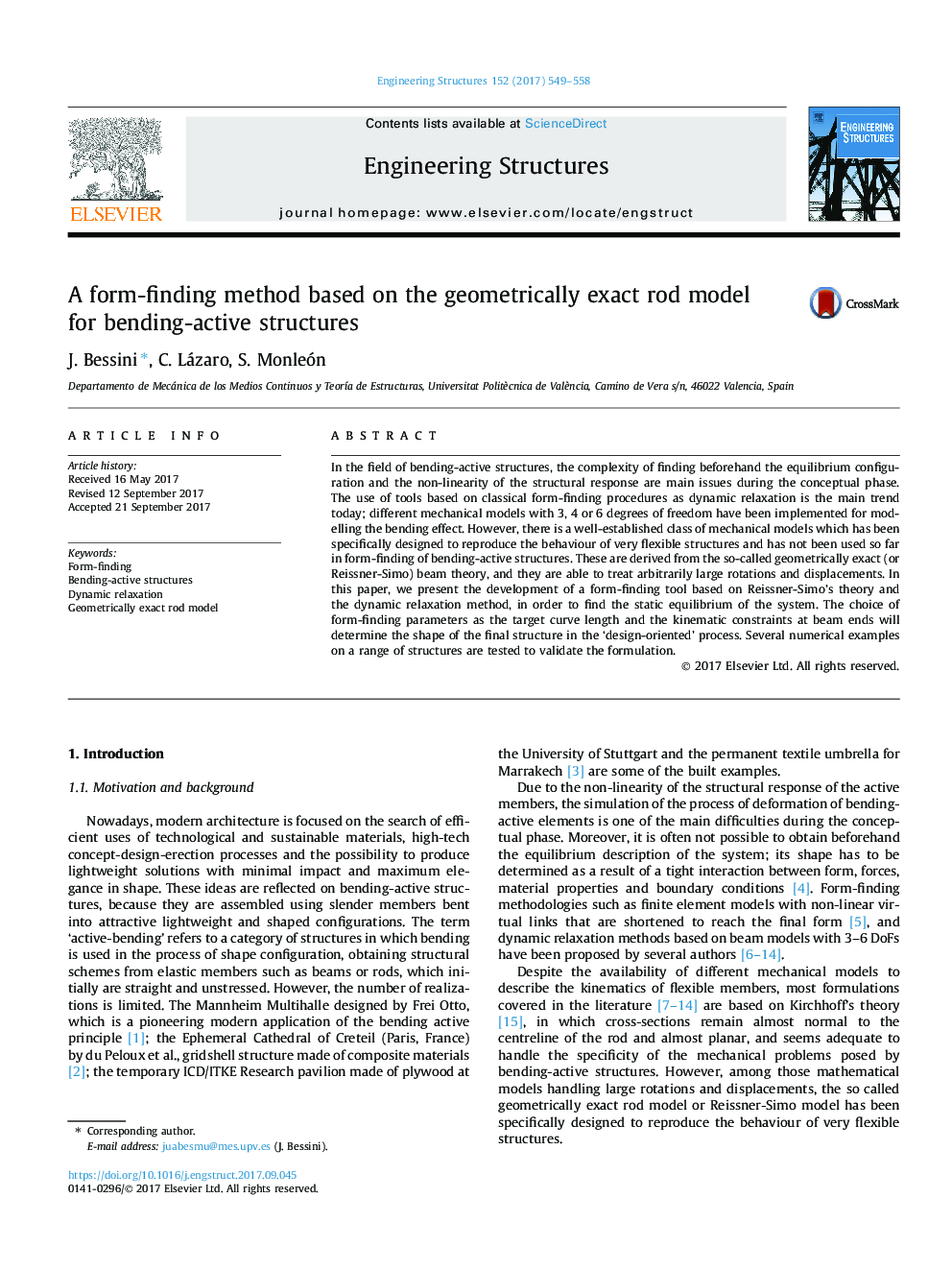| Article ID | Journal | Published Year | Pages | File Type |
|---|---|---|---|---|
| 4919714 | Engineering Structures | 2017 | 10 Pages |
Abstract
In the field of bending-active structures, the complexity of finding beforehand the equilibrium configuration and the non-linearity of the structural response are main issues during the conceptual phase. The use of tools based on classical form-finding procedures as dynamic relaxation is the main trend today; different mechanical models with 3, 4 or 6 degrees of freedom have been implemented for modelling the bending effect. However, there is a well-established class of mechanical models which has been specifically designed to reproduce the behaviour of very flexible structures and has not been used so far in form-finding of bending-active structures. These are derived from the so-called geometrically exact (or Reissner-Simo) beam theory, and they are able to treat arbitrarily large rotations and displacements. In this paper, we present the development of a form-finding tool based on Reissner-Simo's theory and the dynamic relaxation method, in order to find the static equilibrium of the system. The choice of form-finding parameters as the target curve length and the kinematic constraints at beam ends will determine the shape of the final structure in the 'design-oriented' process. Several numerical examples on a range of structures are tested to validate the formulation.
Keywords
Related Topics
Physical Sciences and Engineering
Earth and Planetary Sciences
Geotechnical Engineering and Engineering Geology
Authors
J. Bessini, C. Lázaro, S. Monleón,
